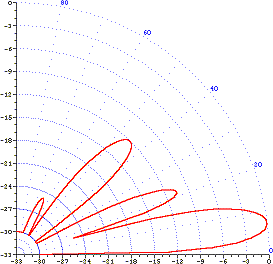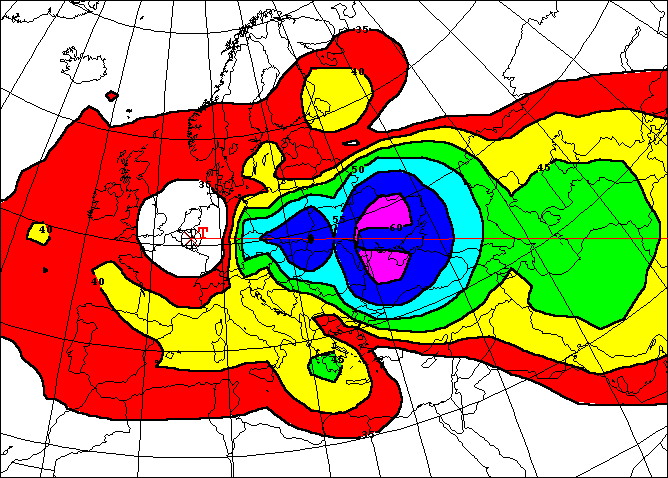The rotatable curtain antenna is a dipole array, consisting of rows and columns of dipoles. The number of rows is usually 2, 4 or 6; the number of columns is usually 2 or 4.
The rotatable curtain antenna is a high gain directional antenna, designed for medium and long range communications.
A rotatable curtain antenna usually consists of 2 curtain arrays (one low-band and one high-band) of horizontally polarized dipoles with a reflector screen placed inbetween. The low-band array covers the 6, 7, 9 and 11 MHz bands and the high-band array covers the 11, 13, 15, 17 and 21 MHz bands (or 13-26 MHz bands).
The number of dipole columns defines the azimuth beamwidth. For a 2-wide dipole array, the beamwidth is around 50°, for a 4-wide dipole array around 30°.
The number of dipole rows and the height of the lowest element above ground determine the elevation angle and consequently the distance of the service area. A 2-row high array has a typical takeoff angle of 20° and is used for medium range communications, while a 4-row high array has a typical takeoff angle of 10° and is used for long range communications.
The supporting structure for a rotatable curtain antenna can either be two towers with the antenna suspended inbetween or a single rotating tower with a substructure for the antenna.



